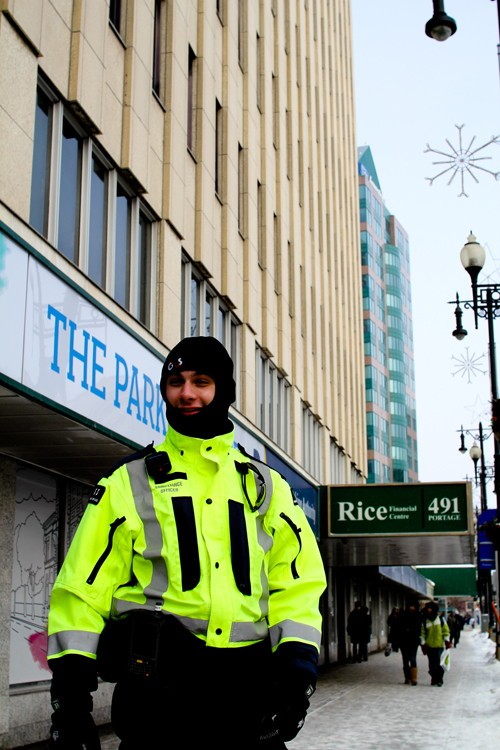Rice Building joins Downtown Security Network
The AnX to be a part of safety database
The safety of University of Winnipeg students has long been a touchy subject due to assaults and robberies near the downtown campus. However, students may take comfort in the fact that the U of W is a member of the Downtown Security Network (DSN).
The DSN is an organization of private and public property managers with the goal of making the downtown a more secure environment. To do so, each building links its security cameras and human resources to improve communication between downtown establishments.
“(The DSN) keeps people informed, whether it’s a communication piece that we’ve partnered with city police on, trying to educate people with what’s going on downtown, taking inventory on cameras or working with the plain clothes unit of the police ... basically, it helps us solve problems,” said Rick Joyal, manager of safety and development for the Downtown BIZ.
Formed in 2009, the DSN now has nearly 220 members connected to its information database and is continuing to grow. Last year, over half a dozen criminals were arrested by police due to the DSN.
Its newest addition is the Rice Building, 491 Portage Ave. – soon to be home to the U of W’s new AnX facility.
The university has been a member of the DSN for over a year, but is not the majority shareholder in the Rice Building and therefore couldn’t join the network earlier.
Monthly meetings are held for members to voice concerns or direct questions to the Winnipeg police, with whom they work closely.
“The network is a prime example of how working in partnership with community groups and businesses works towards positive things for the downtown and for the city,” said Lisa Mandziak, acting sergeant for the community support unit.
Once a crime has been committed, the DSN database provides police and businesses with a broader reach of security cameras and resources to prevent further crimes and apprehend suspects.
The members are alerted through e-alerts or by messages on their mobile phones. The police can then use the database’s cameras to help gather evidence.
“(The university security) maintains control of cameras we have,” said Marty Granger, director of security services at the U of W. “(The DSN) knows we have cameras so they can get a hold of us to see if our cameras picked anything up.”
Granger added that being a part of the DSN means more security personnel and cameras for the AnX. Each member building has its own security system and cameras.
For Joyal, a main factor in downtown safety is the social stigma attached to Winnipeg’s inner city.
“We have to look at where crime is happening. Crime rates (downtown) have been consistent and one of the lowest in city,” Joyal said. “The real problems downtown are social problems ... (We’re) dealing with a poverty problem here, but people equate it with impacting their safety.”
U of W student Frannie Itzkow parks her car by the university every school day. She feels safer knowing that the university is a member of the DSN.
“Linking cameras downtown will definitely reduce crime and makes me feel more comfortable with parking downtown ... (but) it’s a bit creepy to know the police are monitoring people closely,” Itzkow said.
Published in Volume 65, Number 15 of The Uniter (January 13, 2011)








